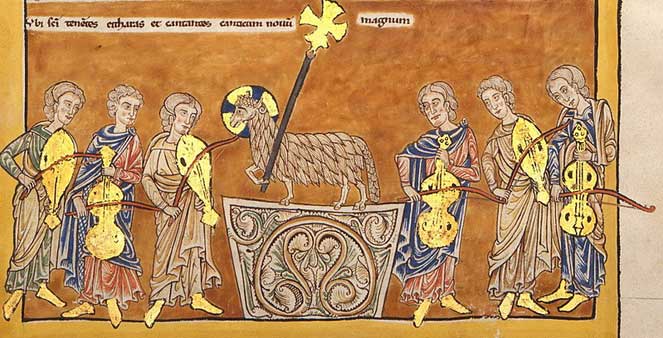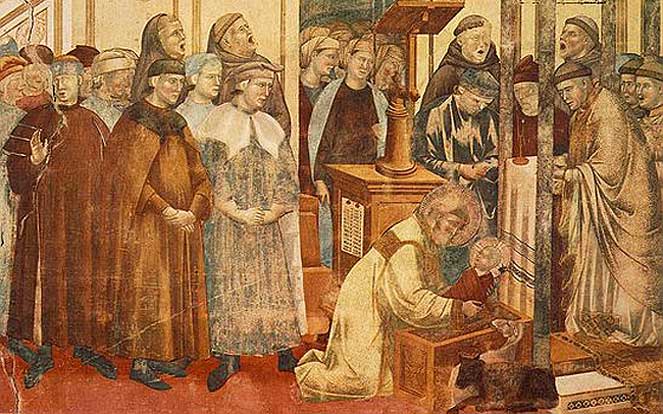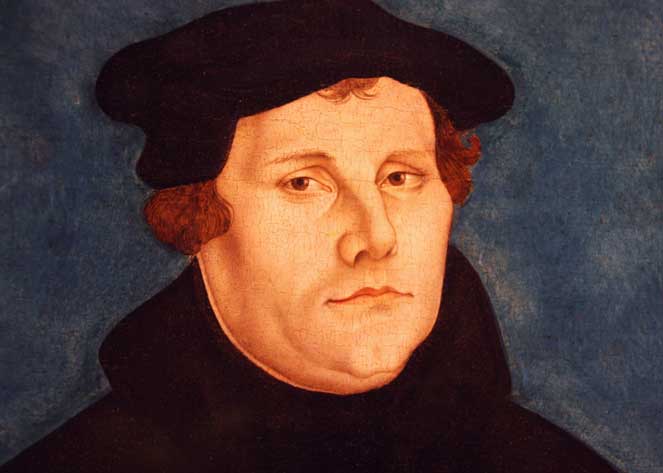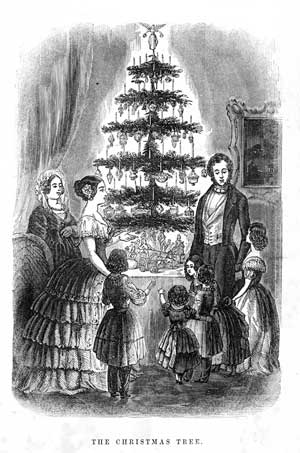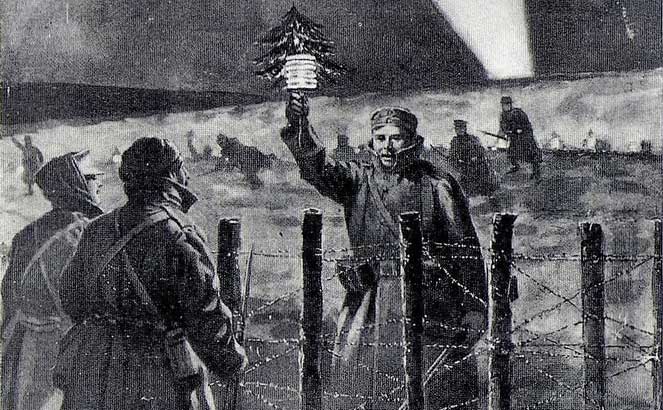|
December 6, 2018

Brief History of Christmas CarolsA walk through time and the art of carolingWith the holiday season just around the corner, extensive preparations are being made in a feverish excitement. This comes as no surprise, considering Christmas is celebrated by more than two billion people from 160 countries, 90% of Americans (both Christian and non-Christian), and 95% of Christians as of 2017. Throughout the world, Christmas is celebrated in diverse ways, but the foundation of Christmas traditions such as caroling emerges from the same root. While Christmas carols are taken for granted as a custom today, it holds a complex history not commonly known to the public. Early RootsIt is a well-known fact that Christmas celebrates the birth of Christ on December 25, but how did this date and tradition arise? While Christ is said to have been born approximately 2000 years ago, the date December 25 was calculated in the second century by a Christian historian and traveler, Sextus Julius Africanus, based on the date on which he thought Christ was conceived. This date was accepted as true and has remained so until today in spite of it being entirely speculative. During Africanus's time, December 25 was a date scheduled for the Roman holiday Saturnalia, which honored Saturn, the god of agriculture, time, and freedom, in a seven-day celebration. In 380, Saturnalia was transformed into a Christian holiday when Flavius Theodosius made Christianity Rome's official religion. 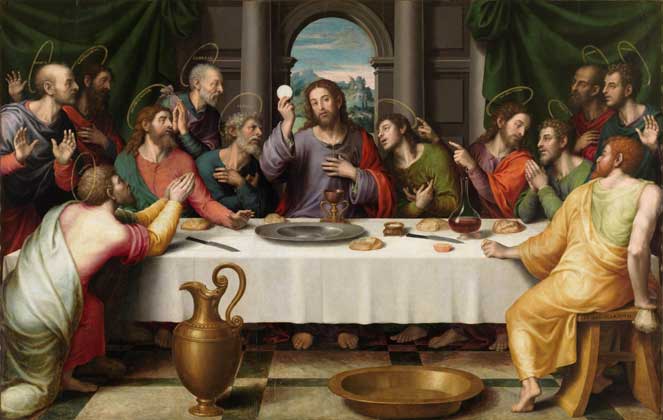 The Last Supper by Leonardo da Vinci The Last Supper by Leonardo da VinciOne of the most well-known Christmas traditions is caroling, but while today the word carol is often associated with Christmas, it derives from Old French "carole," meaning a ring dance involving singing, and from Greek "khoraules," indicating the flautist who would play at these dances. Not coincidentally, thousands of years ago, carols were customary pagan celebrations in Europe that involved group dancing around a stone circle. These traditions were performed at any time of year but predominantly at the Winter Solstice, the shortest day of the year. They were also sung at celebrations such as birthdays, weddings, and multiple holidays throughout the year. Greek and Roman TimesIt wasn't until much later that the Greeks and Romans added a religious connotation to the caroling tradition. In 129, a Roman bishop named Telesphorus suggested that a carol called "Angel's Hymn" be sung at a Christmas service in Rome. "Angel's Hymn" is the earliest known Christian hymn and ignited the long history of Christmas carols. The modern version of this hymn is a fusion of "Angels We Have Heard On High" -Gloria in Excelsis Deo!, a 19th-century carol, and verses from "Les Anges dans Nos Campagnes," a French carol that means "Angels in Our Fields." Another early example of Christmas caroling occurred in 760 when Cosmas of Jerusalem wrote a Christmas hymn for the Greek Orthodox Church. After gaining popularity there, the idea of writing Christmas carols spread and inspired many composers throughout Europe. However, these carols were mostly in Latin, a language that the common people could not understand. Hence, the celebration and popularity of Christmas declined, especially during the Middle Ages. The Middle AgesThe Middle Ages in Europe was a time of general recession in all aspects of society, occurring between the fall of Rome in 476 C.E. to the beginning of the Renaissance in the late 14th century. Commonly referred to as the "Dark Ages," this era did not foster scientific advancements or developments of art as did the periods that preceded and succeeded it. Additionally, the outbreak of the bubonic plague that became known as the Black Death took a significant toll upon the population across Europe, killing about 20 million people (30% of Europe's total population). It particularly devastated cities, where population density was higher than in rural areas and thus made the transmission of disease from one person to the next easier and much more likely. The lack of sanitation and sewage systems made people much more susceptible to deadly diseases like the plague, and the lack of effective medicine to treat it resulted in a high death rate. This recession and devastation also reached the celebration of Christmas. After the fall of Rome, there was no longer a central government that ruled over and unified the European peoples. Therefore, the Catholic Church rose as the most powerful institution on the continent and adhered to a conservative interpretation of the Bible and Christmas, greatly reducing the practice of caroling. The 11th century also gave rise to a series of religious wars waged by the Catholic Church on the Islamic Empire: the Crusades. Such a time of turmoil left little time for the celebration of Christmas with such festivities as carols, causing it to fall in significant decline. This mindset was shifted by St. Francis of Assisi in Italy toward the end of the Middle Ages. Before his creation of the first Nativity scene in 1223, people would celebrate the birth of Christ solely by going to Mass; however, these church services were also delivered in Latin, excluding many of the typical church-goers. Furthermore, paintings depicting Christ as an infant were no less cryptic to ordinary people than Mass since they were often in a style that strayed from the realism of the birth of Christ. By creating the Nativity scene, St. Francis of Assisi visually displayed the raw, realistic birth of Christ in a way that was approachable for virtually everyone. Still in 1223, St. Francis of Assisi began showing Nativity plays in Italy, which contained songs that were mostly in the vernacular language. The idea of creating Nativity scenes and plays that the majority of people could comprehend spread to other European countries, such as France, Spain, and Germany. The popular Nativity plays soon evolved into Christmas carols, their more musical counterparts. The RenaissanceSoon after came the Renaissance, a time of rebirth (also its literal meaning) for Europe after the recession and conservatism of the Dark Ages. Occurring roughly between the 14th and 17th centuries, the Renaissance was characterized by the rediscovery of classical (Greek and Roman) art, architecture, literature, and philosophy. Such a revival of practices of the advanced, ancient world inspired new cultural movements, the most prominent and influential being humanism. Humanism put the individual at the center of the universe instead of God and religion, which had been the primary focus throughout the Middle Ages. Such forward thinking permitted a more open way of celebrating Christmas (and therefore caroling, as well) to gain popularity once more. The 14th century gave birth to newer, more melodic carols that were performed during the intermissions of skits called "mystery plays." The purpose of these plays was to educate the public about lessons from the Bible. Over time, these carols became a crucial component of the plays themselves and found their way onto the streets if the audience approved of their performance. As time passed, this street caroling evolved into the tradition we are familiar with today. In the 15th century, the popularity of these jovial carols sung in the vernacular quickly came to surpass that of the solemn hymns of the Church that were sung in Latin. Because humanism taught appreciation of artistic forms, folk songs and dances were embraced more by the common people as they were more entertaining and enjoyable than the austere, conservative Church hymns. Bards, traveling minstrels, and ballads rose in popularity as they spread religious music to the people. The ReformationIn 1517, a German priest, Martin Luther, led one of the most significant religious reform movements in history: the Protestant Reformation. Luther's mission was to restore the Catholic church because it had become increasingly political, greedy for power, and corrupt. Such unacceptable behavior was exemplified by its selling of indulgences that granted full or partial cancellation of God's punishment for sin, a practice performed solely for the Church to accumulate more money. Luther was a devout priest who denounced the Church's corrupt practices, and he displayed his ardent sentiments publicly by nailing his Ninety-five Theses to the door of the Castle Church in Wittenberg, Germany, on the eve of All Saints' Day on October 31, 1517. Luther's Theses attacked the pope's inappropriate authority over purgatory and traditional Church doctrine. Because he refused to repent, Luther was excommunicated in 1521, which ruptured western Christendom. However, even excommunication did not stop Luther from taking further action. He was vexed at the fact that the Bibles at the time were printed in Latin, which the common, uneducated person could not understand. With the help of Johannes Gutenberg's pivotal printing press, Luther was able to quickly print Bibles in the German vernacular and spread them to the common people. Through this broad dissemination across Germany and soon the rest of Europe, Luther's new Protestant religion gained momentum and reinvigorated Christmas customs. In spite of Luther's momentous progress in the spread of Bibles in the German vernacular, he realized there was a lack of hymns in German. After the Reformation, parishioners became involved in Church services and so had to be able to sing songs they could understand. Luther, already musically literate because of his numerous instrumental studies as a child, began to write hymns in German that the parishioners could both sing and understand. Starting in 1523, Luther wrote new hymns for the parishioners and added new words to old melodies; these were then printed and spread. It is known that Martin Luther wrote 37 hymns, including "Vom Himmel hoch." Luther made significant developments to music in Church services and therefore contributed to the evolution of Christmas caroling, as well. Early PublicationsIn the 16th century, carols began to be printed and published in books. This practice was also accelerated and facilitated by Gutenberg's printing press. The first printed carol book was produced in 1521 by the Wynkyn de Word, the apprentice of an English printer. In 1562, Thomas Tyndale obtained the license to print a set of "certain godly carols to be sung to the glory of God" from the Lord Mayor of London. This set of carols was published in leaflets (called broadsheets) that were distributed all over England. These broadsheets cost one penny and contained illustrations of woodcuts of nativity scenes to accompany the carols; because of the simplicity of the leaflets, most people were able to read them and familiarize themselves with Christmas music. The Elizabethan EraDuring the Elizabethan era (1558-1603) in England, Christmas continued to be a widely celebrated holiday. The holiday season was a time of warm hospitality that set aside the social divisions of the day, resulting in a universal celebration of joy. The Yuletide festivities would last from Christmas Eve to Twelfth Day (January 5), a period of time that was often extended, especially by the lower classes. While such fervent celebrations have influenced modern customs, most carols of the Elizabethan era were not closely related to the traditional Christmas story we know today; rather, carols were more a form of entertainment than worship and were more often sung in homes than in churches. Later, traveling performers began to sing them to the local people of wherever they happened to be. The English Civil WarSuch joyful festivities declined considerably when the English Civil War erupted in 1642. In 1647, Oliver Cromwell and his radical Puritan followers took over Great Britain after Charles I's unpopular reign and established the Commonwealth, a rigid but short-lived rule of England, Scotland, and Ireland. During the Commonwealth, Christmas caroling and celebrations came to an end, although many people continued to sing them in secret. For many years following the Commonwealth, Christmas was largely uncelebrated and not even formally considered a holiday, causing the practice of caroling to decline significantly. England's RestorationIn 1660, Charles II, the son of Charles I, rose to the throne after having been exiled in his early life. His reign signified England's Restoration period after the Commonwealth because it reinstated order and divine right to the English monarchy. It also brought back many English traditions, including Christmas customs like caroling. However, while Christmas gained back popularity, it was still relatively muted compared to pre-Civil War conditions. The Victorian EraIt wasn't until the Victorian era (1837-1901) that Christmas traditions began to be reminiscent of those we practice today. During this time, caroling became an even more widespread practice in England. This major shift occurred because the royal family's fervent Christmas celebrations were published in the Illustrated London News in 1848, inspiring many English families to follow suit. Music was already a favorite pastime of all classes during the Victorian era and gained even more popularity during the Christmas season. As Christmas became a true, widely celebrated holiday, new carols emerged through the fusion of old songs and new melodies. Many of these songs are still popular today, including "Jingle Bells" and "O Christmas Tree." The 20th CenturyThe early 20th century gave birth to many carols that we know, listen to, or sing today. One such example is the famous "Carols of the Bells" (1904). Musicologists--the most prominent being Ralph Vaughan Williams, Percy Dearmer, Martin Shaw, and Cecil Sharp--conducted extensive research about Christmas carols throughout history, which allowed them to match words to tunes. They also published a number of texts, including The Oxford Book of Carols by Dearmer, Shaw, and Williams. It was an anthology of vocal scores for various carols, especially Christmas carols, published in 1928. The Oxford Book of Carols became a keystone of caroling among choirs and churches in Britain. During World War I, the legendary Christmas Truce took place along the Western front in 1914: soldiers from both sides dropped their weapons and left their trenches to spend Christmas jointly. About two-thirds, or 100,000 men, seem to have participated in this Christmas Truce; however, due to mixed accounts of the event, the truth remains misty. It is believed that the crisp, snowy, moonlit night began with caroling from the trenches. On Christmas morning, German soldiers stepped out of their trenches and called Christmas greetings to the other side. After agreeing not to shoot, the soldiers exchanged gifts, such as cigarettes, hats, buttons, and food, and buried their fellow soldiers whose corpses had been left on "no man's land." There are accounts describing a game involving a makeshift soccer ball. Such a remarkable moment of peace did not last long, but the impact of Christmas and caroling was able to flicker even in the midst of a terrible, destructive war. To mark the end of World War I, the Festival of Nine Lessons and Carols was created for the chapel of King's College in Cambridge, England, in 1918. It was first broadcasted through the BBC in 1928 and is a tradition that is still practiced today. King's College Choir, Cambridge, Nine Lessons and Carols, 1992
Throughout history, Christmas caroling has evolved along with humanity. From its roots to today, it has shaped the way we celebrate one of the most influential and widely celebrated holidays in history and in the world, bringing pleasure, happiness, connections, and warmth in the cold heart of winter. What's your story about Christmas carols?
Please share it with us in the comments section below! Comments or Questions
Comments or Questions: Jeanne Gardner * VSM MEMBER * on December 21, 2020 @4:44 am PST
Well done! I enjoyed reading this and learned much.
Cheryl * VSM MEMBER * on January 20, 2019 @7:20 am PST
Lovely history of carols which is perfect for many 10-15 year old kids today who may never have sung carols, whether from unchurched families, or whose parents came from a non-Western nation. Several of my violin/viola students have no idea about roots of carols & believe Christmas is essentially about Santa Claus. I play the VSM duets in their lessons in Nov/Dec and many kids don't know the words--so I have them research it!
Val Lennie * VSM MEMBER * on December 17, 2018 @3:31 am PST
Thank you for the History of Carols story. I am delighted to link it to my Facebook timeline. Thank you for your service to Music and Music Education. Excellent standard is always enjoyed. #musicbestbuys.com
Sally swenson * VSM MEMBER * on December 9, 2018 @11:55 am PST
Thanks for your wonderful history of caroling! We will use some of the information during our carol sing!
References and Notes
Bajekal, Naina. "Silent Night: The Story of the World War I Christmas Truce of 1914." Time, December 24, 2014 [link] "Carol - Dictionary Definition." Vocabulary.com [link] Christiansen, Rupert. "Why do Christmas carols make the church feel nervous?" The Telegraph November 19, 2014 [link] Hopler, Whitney. "The First Christmas Nativity Scene: Created by Saint Francis of Assisi." ThoughtCo. March 8, 2017 [link] Lipka, M., & Masci, D. "5 facts about Christmas in America." Pew Research Center, December 18, 2017 [link] "List of Christmas carols." Wikipedia, November 30, 2018 [link] "Middle Ages." History, September 14, 2018, A&E Television Networks, April 22, 2010 [link] Petropoulos, Kostas. "A-Caroling We Will Go: Rome & the History of the Christmas Carol." Carmenta Blog [link] "Reformation." Encyclopedia Britannica, October 17, 2018 [link] Stephenson, Henry Thew. The Elizabethan People, H. Holt & Co., New York [link] "The History of Christmas Carols." Why Christmas? [link] "The Oxford Book of Carols." Wikipedia, March 19, 2018 [link] Tomyn, Rosanne. "Carols in the Victorian Era." Classroom. [link] DISCLAIMER: All content within this article is provided for general information only. The views and the opinions expressed in this article are those of the author and do not necessarily reflect the views of Virtual Sheet Music and its employees. Virtual Sheet Music is not liable for the contents of any external internet sites listed, nor does it endorse any commercial product or service mentioned or advised on any of those sites.
 Become a Member!"Wonderful! This is the best site I have seen of its kind! Well worth the minuscule amount for the Membership." Claire Eldred professional pianist |
- Instruments
- Piano
- Guitar
- Voice
- Violin
- Flute
- Ensembles
- Genres
- Specials
- Free Stuff
- Browse

